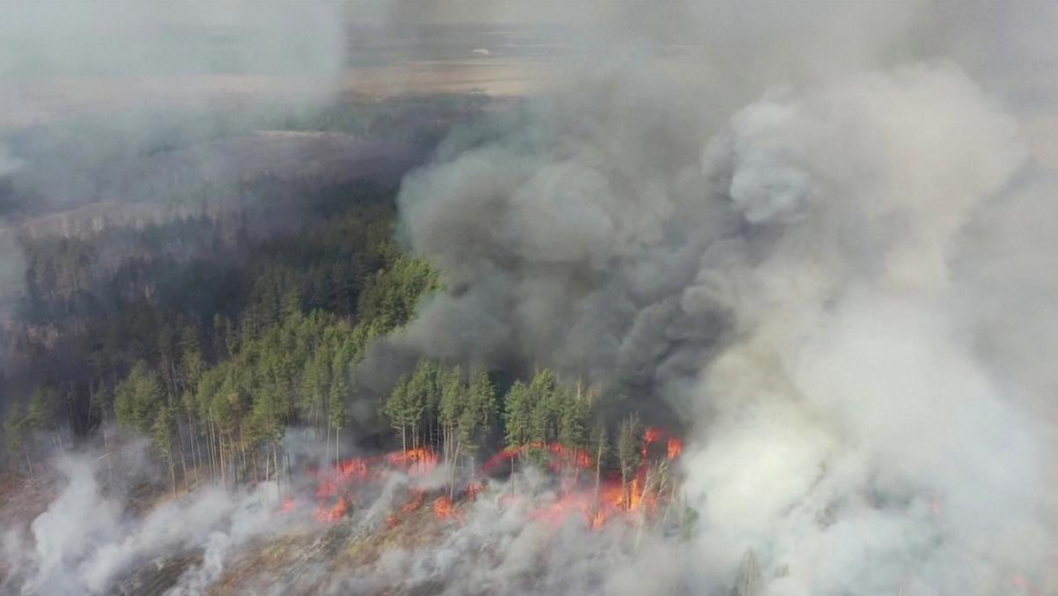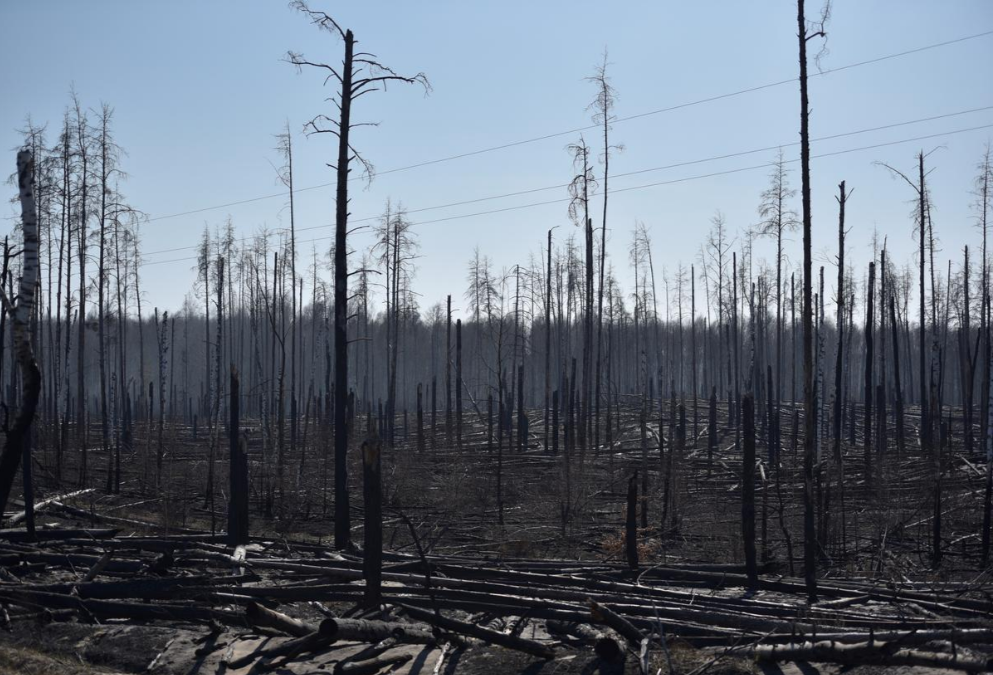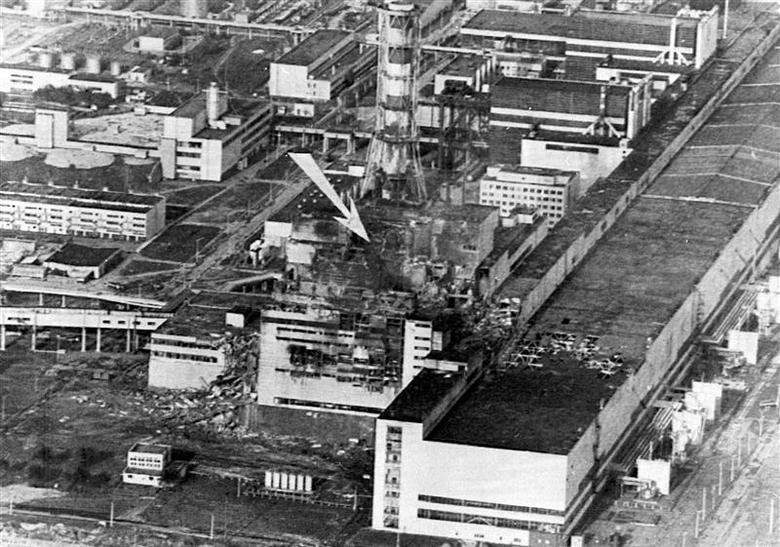
A forest fire in the 30 kilometers exclusion zone around the Chernobyl nuclear power plant, Ukraine, April 12, 2020. /Reuters
A forest fire in the 30 kilometers exclusion zone around the Chernobyl nuclear power plant, Ukraine, April 12, 2020. /Reuters
Hundreds of firefighters on Monday battled a forest blaze in Ukraine's Chernobyl exclusion zone while officials insisted there was no risk to the ruined reactor and nearby storage facilities for nuclear waste.
"There is no threat to the Chernobyl nuclear power plant and the storage facilities," Volodymyr Demchuk, a senior official from Ukraine's emergency service, said in a video statement late Monday.
The fire broke out 10 days ago at the scene of the world's worst nuclear accident in 1986.
Kiev has mobilized helicopters and more than 400 firefighters, with planes dropping tons of water on the fire. Ukraine's Emergency Situations Service said it was still fighting the fires, but that the situation was under control.
However, videos on Sunday showed plumes of black smoke billowing into the sky and trees still ablaze, with firefighters in helicopters trying to put out the fires. Aerial images of the 30 kilometer exclusion zone around the plant, site of the world's worst nuclear accident in 1986, showed scorched, blackened earth and the charred stumps of still smouldering trees.

Burned trees are seen after a forest fire outside the settlement of Poliske located in the 30 kilometers exclusion zone around the Chernobyl nuclear power plant, Ukraine, April 12, 2020. /Reuters
Burned trees are seen after a forest fire outside the settlement of Poliske located in the 30 kilometers exclusion zone around the Chernobyl nuclear power plant, Ukraine, April 12, 2020. /Reuters
The Emergency Situations Service said radiation levels in the exclusion zone had not changed and those in nearby Kiev, the Ukrainian capital, "did not exceed natural background levels."
Greenpeace Russia, an environmental campaign group said the situation is much worse than Ukrainian authorities believe, claiming the analysis of satellite images showed the fire at its closest point was just 1.5 kilometers from the protective dome over the ruined reactor.
On April 4 Ukrainian authorities said the blaze covered an area of 20 hectares, but Greenpeace cited satellite images showing it was around 12,000 hectares in size at that time.
Rashid Alimov, head of energy projects at Greenpeace Russia, said the fires, fanned by the wind, could disperse radionuclides, atoms that emit radiation.
"A fire approaching a nuclear or hazardous radiation facility is always a risk," Alimov said. "In this case we're hoping for rain tomorrow."
Chernobyl tour operator Yaroslav Yemelianenko, writing on Facebook, described the situation as critical.

File photo: An aerial view of the Chernobyl Nuclear Power Plant in Ukraine with an arrow pointing to the location of the explosion, May 9, 1986. /Reuters
File photo: An aerial view of the Chernobyl Nuclear Power Plant in Ukraine with an arrow pointing to the location of the explosion, May 9, 1986. /Reuters
He said the fire was rapidly expanding and had reached the abandoned city of Pripyat, two kilometers from where "the most highly active radiation waste of the whole Chernobyl zone is located." He called on officials to warn people of the danger.
The fires, which follow unusually dry weather, began on April 3 in the western part of the exclusion zone and spread to nearby forests. Police said the blaze was started by a 27-year-old local resident who burned dry grass near the exclusion zone around the ruined reactor. It remains unclear if the person, who has reportedly confessed to starting a number of fires "for fun," is partly or fully responsible.
Chernobyl polluted a large swathe of Europe when its fourth reactor exploded in April 1986. People are not allowed to live within 30 kilometers of the power station.
The other three reactors at Chernobyl continued to generate electricity until the power station finally closed in 2000. A giant protective dome was put in place over the fourth reactor in 2016.
(With input fro AFP and Reuters)